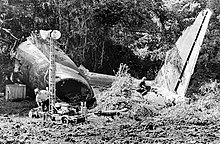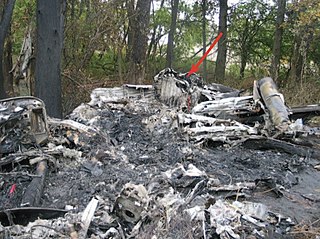
Corporate Airlines Flight 5966 was a scheduled passenger flight from St. Louis, Missouri to Kirksville, Missouri. On October 19, 2004, the Jetstream 32 aircraft operating the flight crashed on approach to Kirksville Regional Airport as a result of pilot error, killing 13 of the 15 people aboard.
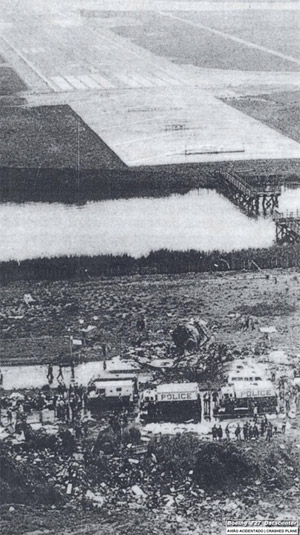
Eastern Air Lines Flight 66 was a regularly scheduled flight from New Orleans to New York City that crashed on June 24, 1975 while on approach to New York's John F. Kennedy International Airport, killing 113 of the 124 people on board. The crash was determined to be caused by wind shear caused by a microburst, but the failure of the airport and the flight crew to recognize the severe weather hazard was also a contributing factor.

Midwest Express Airlines Flight 105 was a scheduled domestic passenger flight that crashed into an open field in Milwaukee, Wisconsin shortly after taking off from General Mitchell International Airport on September 6, 1985. The airplane, a Douglas DC-9, was carrying 31 passengers and crew. None of them survived the crash.

USAir Flight 1016 was a regularly scheduled flight in the southeastern United States, between Columbia, South Carolina, and Charlotte, North Carolina. On July 2, 1994, the flight encountered heavy thunderstorms and microburst-induced windshear while attempting to land, and crashed into heavy trees and a private residence near the airport. The crash and ensuing fire caused 37 fatalities and seriously injured twenty others.

Air Midwest Flight 5481 was a Beechcraft 1900D on a regularly scheduled passenger flight from Charlotte Douglas International Airport in Charlotte, North Carolina, to Greenville–Spartanburg International Airport in Greer, South Carolina. On the morning of January 8, 2003, the Beechcraft stalled while departing Charlotte Douglas International Airport and crashed into an aircraft hangar, killing all 21 passengers and crew aboard and injuring one person on the ground.

United Air Lines Flight 553 was a scheduled flight from Washington National Airport to Omaha, Nebraska, via Chicago Midway International Airport. On December 8, 1972, the Boeing 737-222 serving the flight, City of Lincoln, registration N9031U, crashed while approaching Midway Airport.

Piedmont Airlines Flight 22 was a Piedmont Airlines Boeing 727-22 that collided with a twin-engine Cessna 310 on July 19, 1967, over Hendersonville, North Carolina, United States. Both aircraft were destroyed and all passengers and crew were killed, including John T. McNaughton, an advisor to U.S. Secretary of Defense Robert McNamara. The aircraft were both operating under instrument flight rules and were in radio contact with the Asheville control tower, though on different frequencies. The accident investigation was the first of a major scale conducted by the newly created National Transportation Safety Board. A review of the investigation conducted 39 years after the crash upheld the original findings that had placed primary responsibility on the Cessna pilot.

In aviation, the sterile flight deck rule or sterile cockpit rule is a procedural requirement that during critical phases of flight, only activities required for the safe operation of the aircraft may be carried out by the flight crew, and all non-essential activities in the cockpit are forbidden. In the United States, the Federal Aviation Administration (FAA) imposed the rule in 1981, after reviewing a series of accidents that were caused by flight crews who were distracted from their flying duties by engaging in non-essential conversations and activities during critical parts of the flight.
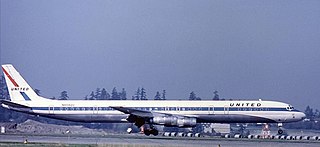
United Airlines Flight 173 was a scheduled flight from John F. Kennedy International Airport in New York City to Portland International Airport in Portland, Oregon, with a scheduled stop in Denver, Colorado. On December 28, 1978, the aircraft flying this route ran out of fuel while troubleshooting a landing gear problem and crashed in a suburban Portland neighborhood near NE 157th Avenue and East Burnside Street, killing 10 people on board.

Comair Flight 5191 was a scheduled United States domestic passenger flight from Lexington, Kentucky, to Atlanta, Georgia. On the morning of August 27, 2006, at around 06:07 EDT, the Bombardier Canadair Regional Jet 100ER crashed while attempting to take off from Blue Grass Airport in Fayette County, Kentucky, 4 miles west of the central business district of the city of Lexington.
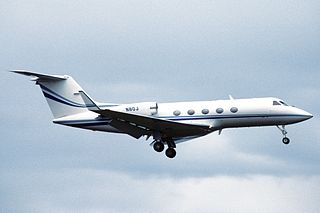
On March 29, 2001, a chartered Gulfstream III business jet operated by Avjet from Los Angeles, California, to Aspen, Colorado, crashed into the ground while on final approach. All three crew members and 15 passengers on board perished.

Colgan Air Flight 3407 was a scheduled passenger flight from Newark, New Jersey, US to Buffalo, New York, US on February 12, 2009. Colgan Air staffed and maintained the aircraft used on the flight that was scheduled, marketed and sold by Continental Airlines under its Continental Connection brand. The aircraft, a Bombardier Q400, entered an aerodynamic stall from which it did not recover and crashed into a house at 6038 Long Street in Clarence Center, New York at 10:17 pm EST, killing all 49 passengers and crew on board, as well as one person inside the house.

Colgan Air Flight 9446 was a repositioning flight operated by Colgan Air for US Airways Express. On August 26, 2003, the Beechcraft 1900D crashed into water 300 feet (91 m) offshore from Yarmouth, Massachusetts, shortly after taking off from Barnstable Municipal Airport in Hyannis. Both pilots were killed.
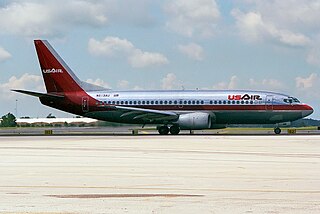
USAir Flight 427 was a scheduled flight from Chicago's O'Hare International Airport to Palm Beach International Airport, Florida, with a stopover at Pittsburgh International Airport. On Thursday, September 8, 1994, the Boeing 737 flying this route crashed in Hopewell Township, Pennsylvania while approaching Runway 28R at Pittsburgh, which was USAir's largest hub at the time.
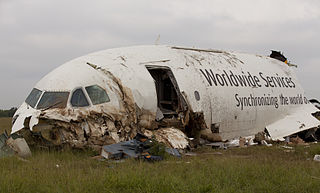
UPS Airlines Flight 1354 (5X1354/UPS1354) was a scheduled cargo flight from Louisville, Kentucky, to Birmingham, Alabama. On August 14, 2013, the Airbus A300 flying the route crashed and burst into flames short of the runway on approach to Birmingham–Shuttlesworth International Airport. Both pilots were pronounced dead at the scene of the crash. They were the only people aboard the aircraft. It was the second fatal air crash for UPS Airlines.

United Airlines Flight 2885 was a scheduled cargo flight from Cleveland to Los Angeles, with stopover in Detroit. On January 11, 1983, a DC-8 operating as Flight 2885 crashed after take-off from Detroit, killing all three crew members. The National Transportation Safety Board (NTSB) investigation determined that the cause for the crash was pilot error. A radioactive package was found on board, but no radioactive material was spilled.

On May 30, 1972, Delta Air Lines Flight 9570 crashed while attempting to land at the Greater Southwest International Airport (GSW) in Fort Worth, Texas during a training flight. All four occupants aboard the training flight were killed. The crash was determined to be caused by the aircraft flying through wake turbulence, and led to sweeping changes in procedures for maintaining minimum safe distance behind aircraft that generate substantial wake turbulence.

Delta Air Lines Flight 723 was a flight operated by a McDonnell Douglas DC-9 twin-engine jetliner, operating as a scheduled domestic passenger flight from Burlington, Vermont, to Logan International Airport in Boston, Massachusetts, with an intermediate stop in Manchester, New Hampshire. On July 31, 1973, at 11:08 a.m., while on an instrument landing system (ILS) instrument approach into Logan in low clouds and fog, the aircraft descended below the glidepath, struck a seawall, and crashed. 88 of the 89 occupants aboard were killed.

Pan Am Flight 799 was an international cargo flight from Los Angeles International Airport to Cam Ranh Airport in South Vietnam that crashed on December 26, 1968, near Anchorage, Alaska. The aircraft involved was a Boeing 707-321C aircraft operated by Pan American World Airways. All three crew members died in the crash.
